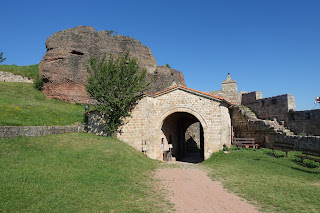Vidin, Bulgaria
The Danube is the second longest river in Europe after the Volga in Russia. The river rises in the Black Forest Mountins of Southern Germany and flows for 2,850 kilometres to the Black Sea passing through ten countries, namely Germany, Austria, Slovakia, Hungary, Croatia, Serbia, Bulgaria, Romania Moldova and Ukraine and four capital cities, Vienna, Bratislava, Budapest and Belgrade.
It has been a major trade rote into the heart of Europe for centuries and the Greeks were known to have traded up the river as far as the Iron Gates. Rome expanded its empire and the Danube formed the northern boundary of the empire.
Other rulers built castles along the river such as Charlemagne who built Werfenstein and many of the fore runner kingdoms that emerged as the Austro Hungarium Empire. The Ottomans expanded their empire through the Balkans to the Danube to challenge the supremacy of the Austro Hungarian empire.
Both empires collapsed at the end of the First World War and the Danube saw more changes with the Second World War, the Cold War, the collapse of communism and the expansion of the European Union and with the opening of the Rhine Main Danube canal, shipping can travel from the North Sea to the Black Sea.
The sand banks of the river change constantly and during low water levels especially in summer, ships can get stranded like this ship that has run aground.We were bused from Vidin on the Danube into the Balkan Mountains to visit Belogradchik.
There is a fortress here originally built by the Romans, expanded in the Middle Ages and more than doubled in size buy the Ottomans between 1804 - 1837. The main entrance.
Looking out along the Ottoman walls.
Looking up through the gate to the higher courtyard.
Some of the fascinating odd shapes that have arisen from erosion of the conglomerates in the area.
Looking down at the town of Belogradchik.
We returned to Vidin to walk around the Baba Vida Medieval fortress that guarded the trade routes through the city.
The walls overlooking the moat.
The Octagonal Tower built by the Austrians.
One of the bartizans.
Another bartizan.

















No comments:
Post a Comment